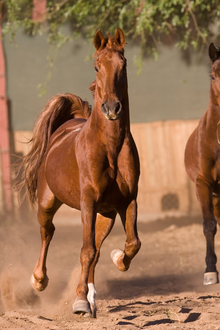During the Fifth International Equine Conference on Laminitis and Diseases of the Foot, a number of researchers presented information about laminitis in horses and the impact the disease has on the horse industry.

Hoping for laminitis cure by 2020
The economic and emotional toll exacted by an incomplete understanding of laminitis results in frustration felt by veterinarians, horse owners, trainers, caregivers and the general public.
Christopher Pollitt, the veterinarian and researcher from the Australian Equine Laminitis Research Unit at The University of Queensland, joined Scott Morrison, the equine veterinarian from Rood & Riddle Equine Hospital in Lexington, Ky., for a discussion on dealing with contra-lateral limb laminitis.
They agreed that the psychology of a horse seems to be a factor in how it reacts to various treatments for laminitis.
“Some horses handle it better than others,” Morrison says. “We often want a horse to lie down to prevent further tearing of the laminae, but some will lay down and some won’t. Some you can sling and some you can’t.”
Pollitt suggested that contra-lateral limb laminitis is caused in part by an interruption of alternate loading of limbs, as the horse tries to keep it’s weight off the painful foot that was first inflicted with laminitis.
“Alternate loading is part of the normal lifestyle of the horse and is part of the circulatory system of the horse,” he says. “When a horse has to restrict loading to one foot, it interferes with this.”
In addition, the conference addressed the economic and emotional toll exacted by an incomplete understanding of laminitis which results in frustration felt by veterinarians, owners, trainers, caregivers and the general public - many of whom came to know the disease through Barbaro.
Fighting a complex, systemic disease like laminitis can only be accomplished through shared efforts. Threats to finding a cure rest in two areas: difficulties with funding the necessary research, as well as competition between research groups for that limited funding. Losing valuable researchers who move to other areas of study due to lack of resources would be disastrous.
Dr. Rustin Moore, chair of the Department of Veterinary Clinical Sciences, and acting director, Ohio State Veterinary Medical Center, presented a paper in which he laid out a plan for conquering laminitis by 2020. For horses, this accomplishment would be a lifesaver.
Read more about Laminitis
